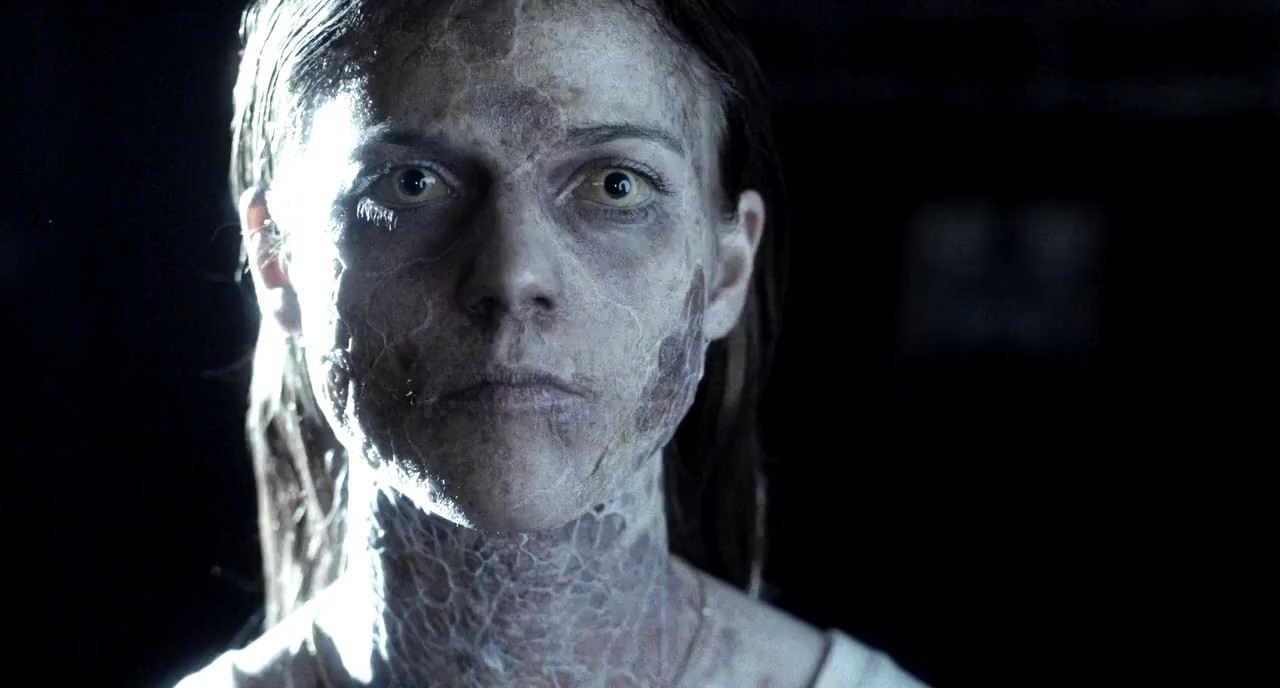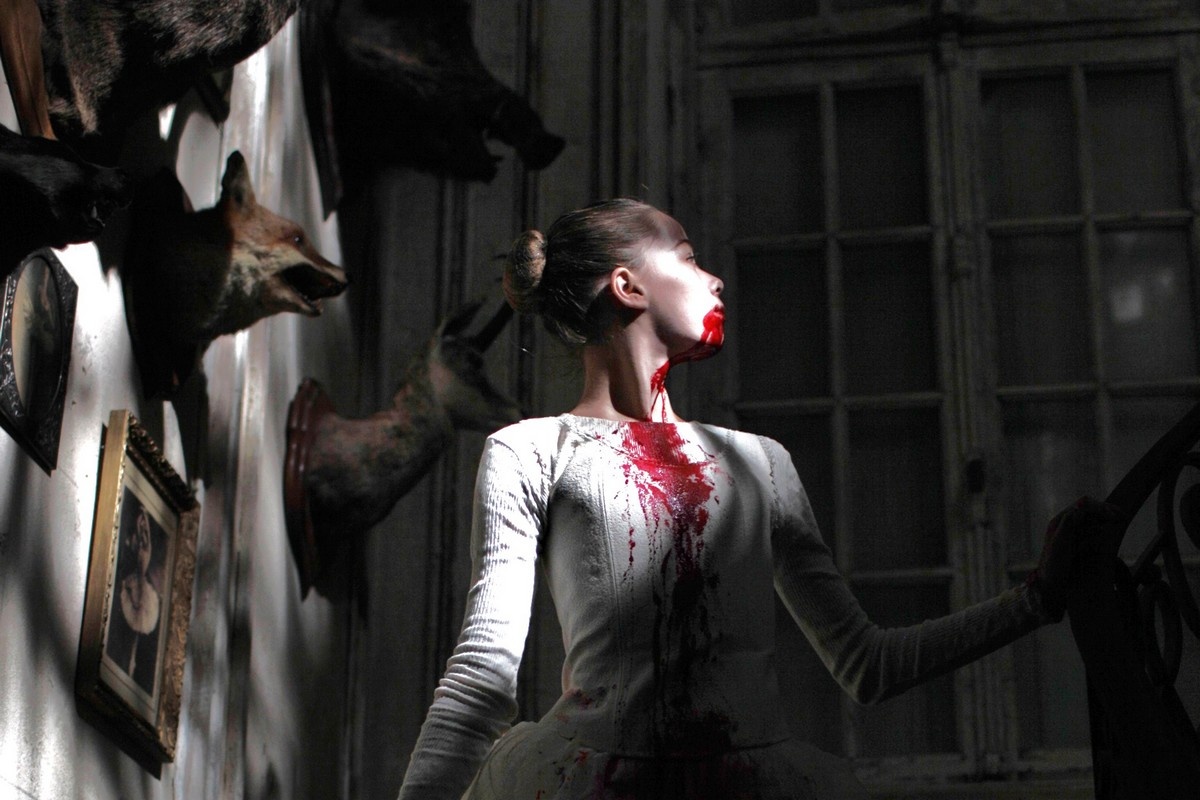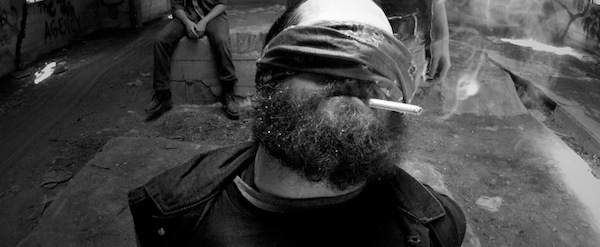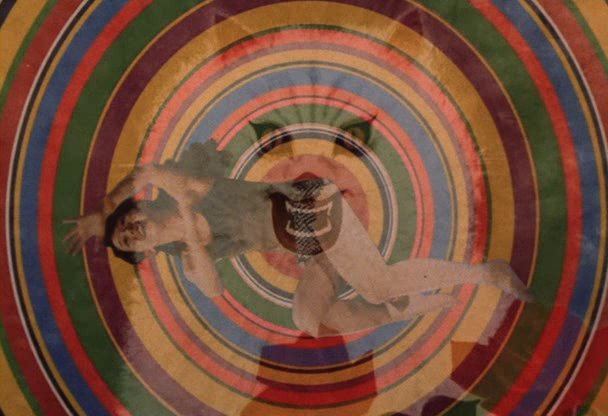
October is here, and for many genre fans the month of Halloween provides an excuse to watch much more horror cinema. There is something oddly comforting about wrapping up with a hot drink on a cold, gloomy night and watching something that scares us; whether this be an old favourite or a first-time watch.
This list simply aims to draw attention to some great or interesting horror films that aren’t necessarily the first films you’ll think of putting on if you have friends or family over for an overnight film marathon. Admittedly, there are some classics featured, but they aren’t mentioned as often as they deserve to be, despite their authority in the genre.
As well as these, there are some more recent horror films which are definitely worth your time – for diversity, a range of films will be spotlighted, after all, horror cinema can provide great fun as well as scares.
10. Livid (Alexandre Bustillo & Julien Maury, 2011)

French filmmakers Alexandre Bustillo and Julien Maury have had an interesting career together indeed. Their most recent feature – 2017’s Leatherface – saw the pair take aim at a The Texas Chainsaw Massacre origin story, and the results were certainly disappointing; that’s because their career up until their fourth feature had been so impressive. They received significant attention for their ultra-violent 2007 directorial debut Inside, which has since gained an even more respectable following.
Among the Living, their third feature, was also a solid effort, as was their second-feature Livid, a refreshing take on the vampire sub-genre which allowed the duo to build upon the skills they had previously exhibited.
Lucie (Chloe Coulloud) is an at-home nurse currently caring for Mrs. Deborah Jessel, a woman of great wealth bed-bound and comatose within her extensive mansion. She was once a very significant ballet teacher, and Lucie learns of a rumour that there are great riches of gold and jewels hidden in her home. Informing her boyfriend, he decides to recruit his brother to aid them in entering the mansion and stealing the fabled stash. However, their invasive presence awakens a dark secret, leaving them fighting for survival in a tense and creative approach towards the home-invasion formula.
Although they are trapped in such a grand space, Bustillo and Maury are able to make the interiors feel just as claustrophobic as the house in which Inside was set. It is a film which mostly takes place in the dark, so much of the atmosphere is shaped by not knowing what may linger in the frame alongside the characters. This fuels a sense of dread, further complimented by the creepy iconography of taxidermia and the antagonist which stalks them.
For a film like this to work, silence must be respected, and the directors manage to strike a balance between absence of reassuring interaction between characters, adding to our helplessness, and the distressing cries one would expect and anticipate from the film’s final act.
Boasting gorgeous visuals, satisfying story and a pressure on the viewer to accompany the protagonists in their panic to escape, Livid is certainly a worthwhile watch.
9. Island of Lost Souls (Erle C. Kenton, 1932)

Although Erle C. Kenton’s fabulous film is indisputably a horror-classic, it is unlikely that many will rush to re-watch it during the Halloween period. Yet, it is a perfect piece of work to revisit because you can include the whole family – accessible for all ages and a thoroughly engaging gem from one of horror cinema’s legendary figures.
After being shipwrecked, Edward Parker (Richard Arlen) finds himself aboard a boat amongst the animals headed towards the island of Dr. Moreau (Charles Laughton). Arriving at the secluded and mysterious island, Edward uncovers the nature of the doctors sadistic experiments, left in fear of what the maniacal villain may have in mind for him.
The film was initially rejected by the BBFC for being “against nature”, which now seems absurd. Others at the time also found this ridiculous, with Elsa Lanchester’s hilarious response being: “Of course it’s against nature. So’s Mickey Mouse!” It is a film which concerns manipulating and disrupting nature, so to refuse it classification on such grounds is befuddling.
A cut version of the film with an X certificate was released in 1958, and thankfully, the film finally received a DVD release uncut in 2011 – and after all the controversy, received a mere PG certificate. Not only is it a terrific film, but it is also an interesting case study in the realm of shifting attitudes towards censorship.
Island of Lost Souls is a timeless piece of work, and although released over eight decades ago, its story and the themes that embellish it still resonate with modern audiences. Questions of interference with nature and the extent to which human meddling can provoke enforced boundaries are still asked and debated, and have provided the backbone for the core concepts of most major works of science-fiction.
However, the stellar costuming and concepts of human/animal hybridisation assert this as a horror film which can terrify us by way of its bold visual ambition, but can also make us sympathise with the doctor’s creations and their identity confusion, outcast into the eerie corners of the island. It’s a great film to enjoy and discuss – a classic which remains an absolute pleasure to rediscover every single viewing.
8. Worm (Doug Mallette, 2013)

Doug Mallette’s Worm is definitely the most obscure film on this list, and it really is worth seeking out for its unique depiction of a nihilistic future indebted to the works of the great David Cronenberg.
Set in the near future, the film depicts a society which has lost the ability to dream. In an attempt to address this concern, scientists have engineered recreational parasites; worms that when inserted into your ear allow you to live out your wildest fantasies in your sleep. These genetically-modified limbless organisms are an instant commercial success, and worm stores and delivery services begin to thrive.
We follow Charles (John Ferguson), a desperately lonely man who purchases the worms in hopes of escaping his mundane reality – however, the product is pulled when the side-effects begin to surface. Society has become dependent on the outlawed fix, and addicts are forced to resort to desperate measures to keep the fantasy alive.
The film has a very low budget, proving that an intriguing premise such as this can really come through when fully developed and remaining focus. It’s undoubtedly unique and confident in its allegory for drug-use and of a cannibalistic society which resembles a distorted version of our own consumerist culture, but of course executed in the way of distinguished science-fiction horror.
The protagonist is admittedly exaggerated, but his behaviour and overly polite mannerisms actually seem to make sense in the society from which he feels excluded; pleasant as a result of distance. Mallette is depicting a dystopian hyper-reality, everything is excessive, off-kilter and brash, but can be related back to the extent to which our own society has found comfort in the consumption of products to feed our illusive fantasies.
Worm is a must-see for fans of thought-provoking and original independent horror, delivering a finale which is both shocking and exciting.
7. House (Nobuhiko Obayashi, 1977)

Who could possibly have expected that Japanese cinema’s response to Steven Spielberg’s Jaws would look anything like Nobuhiko Obayashi’s cult-classic House, and yet it did. Toho approached him to to write the script for a film in the vein of the 1975 blockbuster due to facing concern over falling cinema attendance and an increased interest in foreign product.
Inspired by ideas from his daughter of a house consuming its inhabitants, Obayashi wrote the script only for it to collect dust for a couple of years, as no director at the company wished to tackle it. Finally, they requested the writer to direct it himself, and 1977’s one-and-only Hausu was born.
A schoolgirl travels to her aunt’s remote home with six of her classmates for a summer getaway. Her father’s plans to remarry make her miss her deceased mother furthermore, and perhaps journeying to the home of her aunt will help to fill the absence. However, there is something wrong; the house is alive with supernatural antics, and the girls must fight to escape the confines of its shifting design.
Obayashi began his career in the late 1950s making experimental art films on 8mm, but his first published pieces were actually promotional videos shown in movie theatres before the feature began.
After a showcase of his and others’ work, Obayashi was approached by a representative of Dentsu – an advertising firm – who offered him a job making commercials at Toho studios, and knowing that they had much better equipment at their disposal, he accepted. He went on to become the celebrated creator of over two-hundred commercials, and after many years was finally encouraged to enter the world of feature-filmmaking.
Most had to work their way up in the industry, perhaps working as an assistant, but due to the strength of Obayashi’s independent shorts, successful promotional videos and the shift towards television, cinema needed someone with his unique talent. The film was a financial success despite generally poor initial critical reception, and the film is now remembered as a classic of Japanese cinema
. It is hard to compare it to any other film of its time; it blends the directors flair for advertising with his more artistic and absurd approach towards narrative cinema. Visually it is jaw-droppingly ambitious, and its beautifully painted backdrops and terrifyingly comic imagery are unforgettable.
House is a film that embraces the insane, showing audiences exactly how far the medium can be creatively manipulated to show us something we haven’t seen before, or have even seen again. It’s a deliciously entertaining film, which confusingly makes us feel joy, sadness, fear and loss. It’s imperative viewing, and for those who haven’t seen it at all or in a while: introduce it to yourself or others this Halloween.
6. Honeymoon (Leigh Janiak, 2014)

For horror fans in 2014, Leigh Janiak’s directorial feature-debut was a welcome and pleasant surprise. Many often nitpick when discussing the genre, arguing that often bad acting is the issue that condemns a film’s otherwise promising ideas; not Honeymoon. The film features two fantastic performances from its leads, Harry Treadaway (Penny Dreadful) and Rose Leslie (Game of Thrones), who successfully absorb you into investing in this distressing nightmare.
The pair play young newlyweds venturing out to a secluded lake house in the woods for their honeymoon. The chemistry between them is terrific, making their union entirely believable.
After a night-time incident, Paul discovers his wife Bea naked and at a distance from their temporary residence, confused and disorientated. They return, yet her behaviour continues to change, leaving her husband fearing that his new partner may be forever lost – he is desperate to know why.
The set-up for the film is ingenious. Horror cinema has long explored relationships and the ways in which the behaviour of a partner can form a mystery; Jacques Tourneur’s 1942 film Cat People is a classic example. The fear of losing a partner to something we cannot locate or understand is something all audiences can relate to, and the performances here make the situation much more convincing than other recent examples which explore this frustration.
The first act allows us to bask in the warmth of their love, and then the pivotal moment in which Bea disappears offers us enough intrigue to encourage us to question and ponder the nature behind her increasingly alarming decisions. Momentum builds, possibilities are acknowledged, but importantly a sense of ambiguity is retained in the face of an unsettling finale.
Honeymoon is an isolated little chiller definitely worth the watch, offering scares and stoking our own paranoia and insecurity until we feel one and the same with our protagonist. Janiak is definitely a powerful female-voice to emerge in horror cinema, and likely to impress again in the near future.